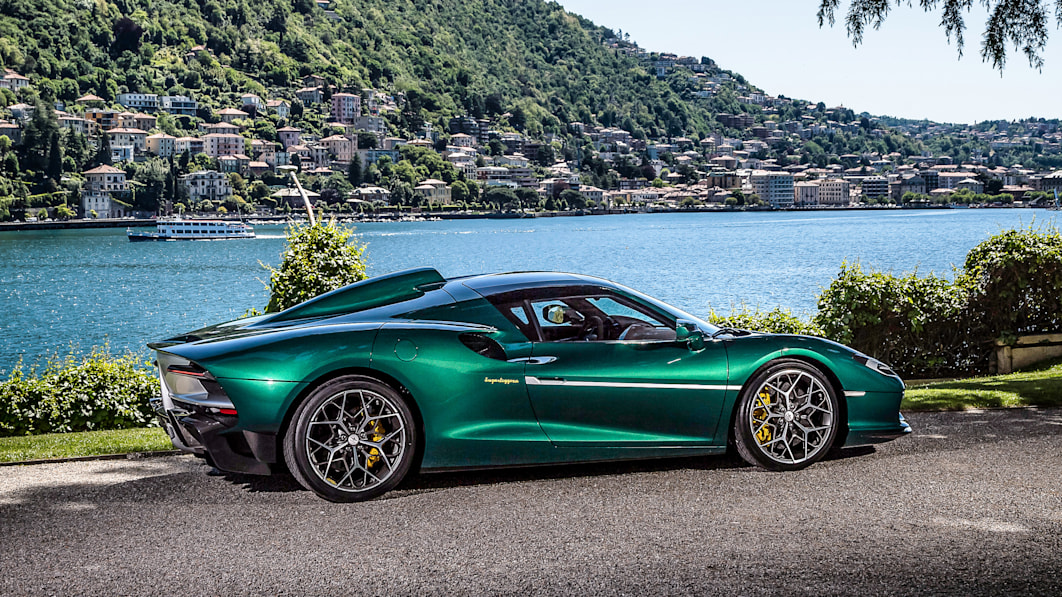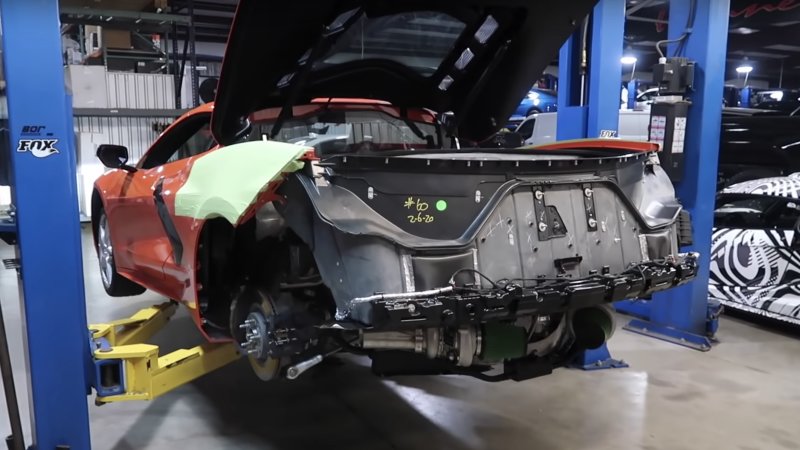If your idea of a daily driver is a nearly-600-horsepower anime monster on wheels, ProDrive has just the car for you. The Hunter, based on the BRX extreme off-road race car of the same name, is billed by developer ProDrive as the “World’s First All-Terrain Hypercar,” and it can be yours for just £1.25 million ($1.63 million). Plus tax.
“There are numerous hypercars on the market, however they all need good roads or even race tracks to show their performance,” said ProDrive chairman David Richards in the company’s announcement. “We identified that in certain parts of the world, particularly the Middle East, there are vast expanses still to be explored that go way beyond the access provided by asphalt roads. Therefore why not create a vehicle that gives the opportunity to explore these regions with performance way beyond that offered by any off-road vehicle before.”
The Hunter is built around an old-fashioned internal-combustion engine. The twin-turbo, dry sump Ford six-cylinder produces at least 592 horsepower (600 bhp) and 516 pound-feet of torque, which is significantly more than it makes in race spec. That’s one benefit of the street; there are no regulations (and corresponding restrictor plates) to spoil all your big-horsepower fun. Power goes to the ground by way of a six-speed paddle-shifted gearbox mated to front, rear and center differentials routing torque to all four wheels. ProDrive says this combo is good for a 0-62 time under 4.0 seconds and a top speed in the neighborhood of 180 mph, but stressed that on-road performance is not the Hunter’s raison d’être.
“We took the deliberate decision to keep the Hunter Hypercar as close to the original as possible,” said Richards. “It’s about giving owners the opportunity to experience what it is like to drive Loeb’s Dakar car across the desert, but with all the comforts of a road car and the ability to drive it from your home, through a city, to any destination of your choice.”
Like the race car, the Hunter’s chassis is a steel tube-frame setup wrapped in carbon fiber body panels. The suspension is a double-wishbone setup front and rear with adjustable dampers. 17-inch wheels with 35-inch off-road tires are standard; behind them you’ll spot six-piston Brembo brakes. The Hunter street car also gets an extra 50mm of suspension travel to improve ride quality over the racer’s. The exterior may look a bit like Pikachu auditioning for a “Cars” sequel, but at least you can tell all your friends that it was penned by Ian Callum. That means it’s basically a Vanquish, right?
We’re normally not convinced by the typical race car for the street (or in this case, “Ferrari of the desert” turned race car for the street) hyperbole, but the Hunter is an incredible performance machine that is conspicuously lacking in creature comforts. How lacking? Well, ProDrive’s list of interior features includes carbon fiber seats, six-point safety harnesses, a fire suppression system and lightweight battery.
That’s not exactly an excess of creature comforts, but Callum was brought back in to help design some cabin elements that were necessary to make the Hunter more livable in daily life, including a center console with slightly more conventional switchgear. The announcement made no specific mention of air conditioning, but there’s a snowflake icon visible amongst the controls, so we’re going to assume it at least offers that. For nearly $1.5 million, that seems reasonable.
Related video:


















